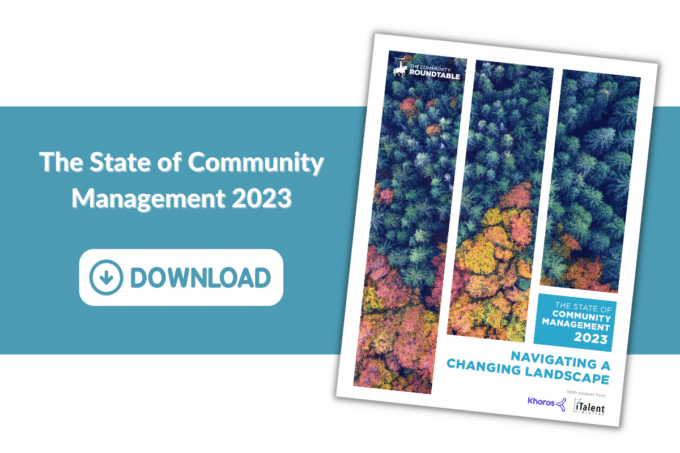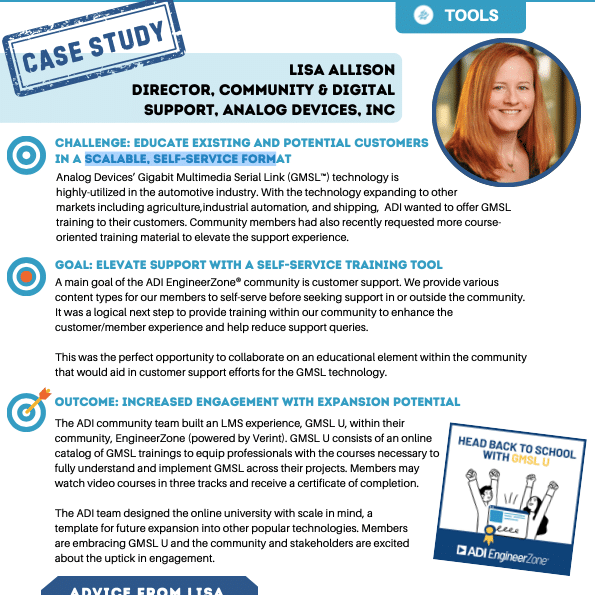The Community Maturity Model’s™ Content & Programs competency concerns the twin foundational pillars of any thriving community program: content and programs. These are the essential components that attract and retain members. High-quality content is critical to create interest and engagement among members. Programs facilitate connections and foster deeper relationships between members. Together, they are the driving force that keeps a community active and successful.
Experienced community managers know that creating and curating compelling content is critical to the success of any community. Likewise, creating opportunities via programs for members to come together to share and learn together is an essential part of their work.
Our 2023 State of Community Management respondents reported an increase in their budget allocated to content and programs, more than tripling since 2020 (from 3% to 10%) – which is a great sign that the efficacy of community programming is being more widely recognized.
But, with so many options, what’s the best way to spend your content and programming budget?
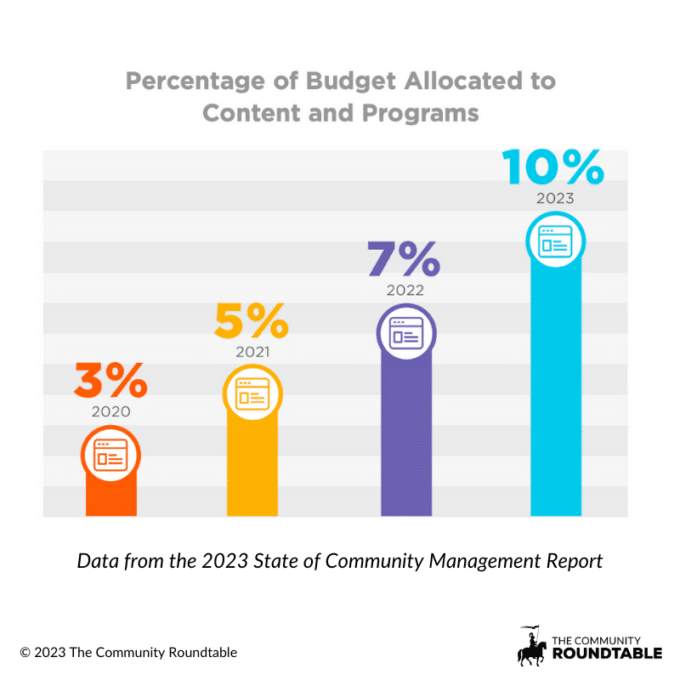
Understanding the importance of content and programs and allocating your budget appropriately is a positive step, but where you allocate that money is where it’s interesting to compare our survey average against the best-in- class segment. Not surprisingly, both segments report “virtual discussions” are the leading program with 77% of the survey average and 90% of the best-in-class segment leveraging them. “New member welcome/onboarding” programs are also widely employed (62% vs 77%), as well as “member spotlights” (48% vs 57%). “Conference and events” also sneak onto the list, reinforcing that getting your community members together in person remains a focus in this post-COVID era.
Best-in-class programs, with their formal leadership programs, remind us to look outside your community team to create compelling programs. While the 2023 survey average generally tracks with previous years, the best-in- class segment draws in contributors from both in and outside the organization. It’s most striking with “peers from other areas of the organization,” where 76% of the best-in-class segment is pulling from (vs just 46% of the survey average). It’s worthwhile to audit how diverse your community program plan is and add in new voices on a regular basis to keep it from getting stale.
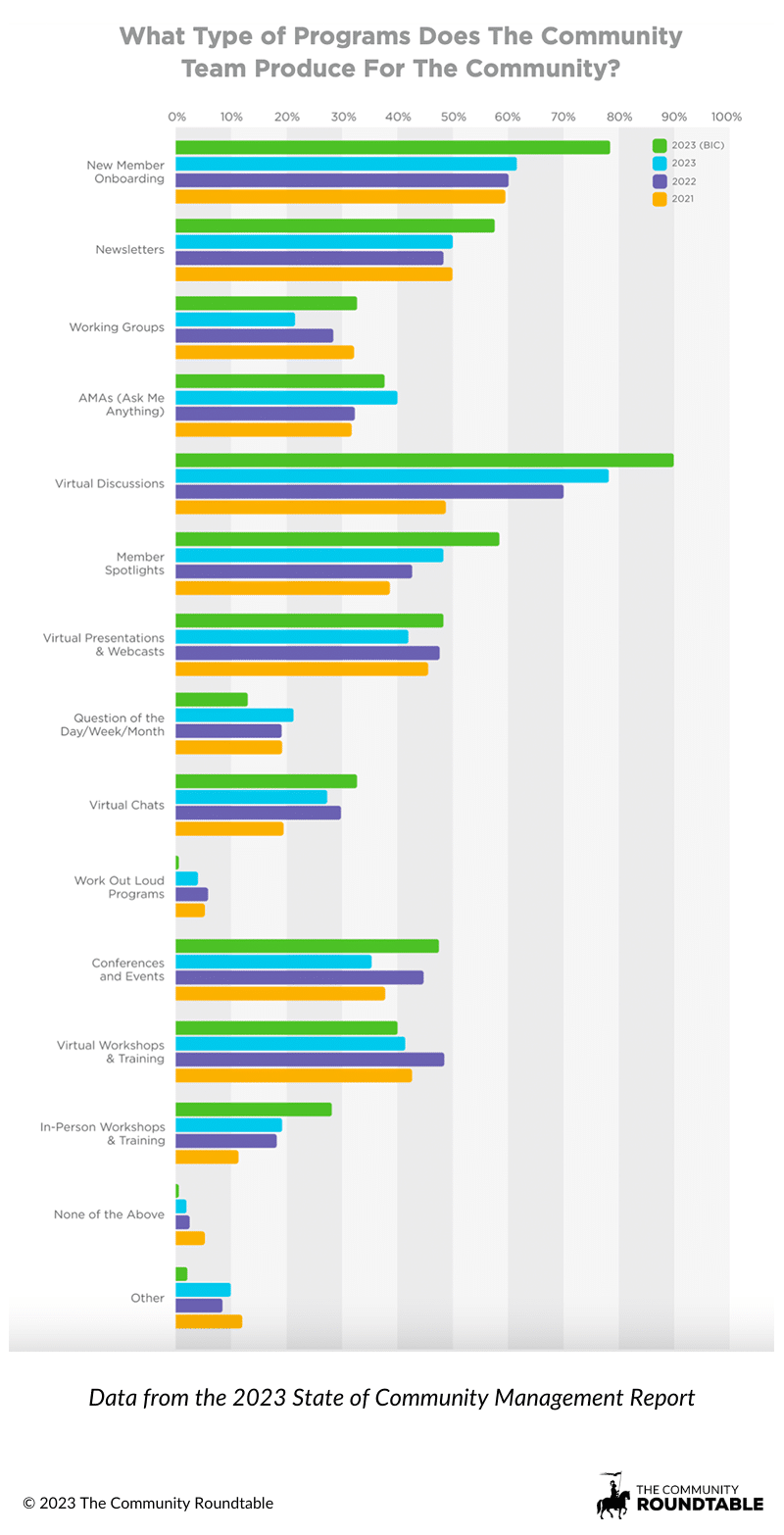
Finally, last year we (strongly) suggested that if you don’t currently have programs focused on new members it should be on your short list. To the 36% of respondents in this year’s survey that still don’t do this or don’t know if you do, please find out. If you’re not welcoming new members with information on how they can get the most out of the community, make it a priority. We may sound like a broken record, but it’s essential to your success.
It’s also of note that we saw a general maturation of content and program planning in this year’s sample, with 21% of respondents indicating that they have a formal plan that aligns with community strategy and is integrated with other functional plans, up from 13% in 2022. This is a big jump and given the importance of content and programs in overall community engagement, a welcome one.
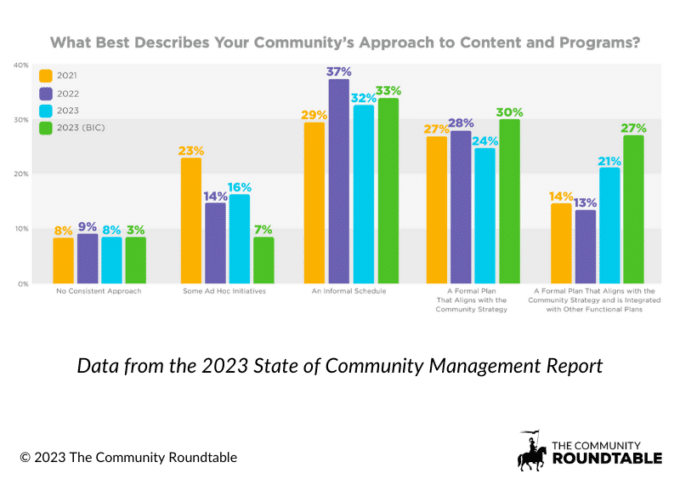
Download the State of Community Management 2023 to learn more about how you can leverage communities as effective behavior change-makers at your orgs.
